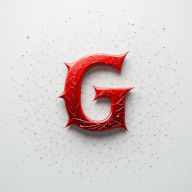Description: Affine transformation is a linear mapping method that preserves the collinearity of points, as well as the parallelism relationships between lines and planes. In more technical terms, it can be described as a combination of linear transformations and translations. This means that, through an affine transformation, operations such as rotations, scalings, translations, and reflections can be performed while maintaining the geometric structure of objects. Affine transformations are fundamental in computer vision, as they allow for efficient manipulation of images and 3D models. Additionally, they are essential in computer graphics, where they are used to represent objects in different positions and orientations within a three-dimensional space. The versatility of affine transformations lies in their ability to be represented by matrices, which facilitates their implementation in computational algorithms. In summary, affine transformation is a powerful tool in the field of geometry and computer graphics, enabling a wide range of applications in the manipulation and analysis of visual data.
History: Affine transformation has its roots in analytic geometry and was formalized in the 19th century. As mathematics and geometry evolved, more complex concepts related to transformations in space began to be developed. In the 20th century, with the advancement of computing and the need to represent graphics in 2D and 3D, affine transformations became an essential component in the development of computer graphics and computer vision.
Uses: Affine transformations are used in a variety of applications, including computer graphics, where they allow for the manipulation of objects in three-dimensional space. They are also fundamental in computer vision for pattern recognition and image alignment. In the field of robotics, they are used for navigation and mapping of environments. Additionally, in image editing and processing, they enable efficient adjustments such as rotations, scalings, and translations without distorting the images.
Examples: A practical example of affine transformation is the rotation of an image in graphic editing software, where the image can be rotated around a specific point without distorting its shape. Another example is the use of affine transformations in augmented reality, where virtual objects are placed in a real environment while maintaining their proper scale and orientation.



